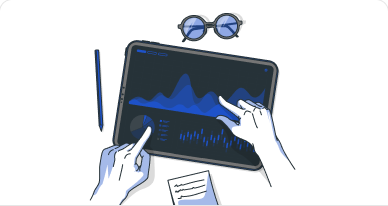-
An asset is a resource with economic value that a person, company, or country owns with the anticipation of future benefits.
-
An asset is anything that increases a company's value or benefits its operations and is reported on a firm's balance sheet.
-
If it is manufacturing equipment or a patent, an asset is something that will generate cash flow, reduce expenses, or improve sales in the future.
Explanation :
Assets represent the company's economic resources or represent access to other persons or firms who do not have them. The right or other access is legally valid, which means that economic resources can be used at the discretion of the company, and their use may be restricted by the owner
For the asset to exist, the company must have its right from the date of the financial statements. An economic resource is rare and capable of generating economic benefits by generating revenue or reducing inflation.
Assets can be widely classified into current assets, fixed assets, contingent (potential) assets, tangible and intangible assets.
Asset Turnover Ratio
Asset turnover ratios are used to measure how effectively a company uses its assets to generate revenue. As an indicator of how well a company is using its assets to generate revenue, asset turnover ratios are a useful metric.
An asset turnover ratio higher than 1.0 indicates a company is more efficient at creating revenue from its assets, while a low asset turnover ratio indicates the company is not generating sales from its assets efficiently.
Formula: net sales / Average total sales Or Revenue / Assets
In a Nutshell :
-
This measure measures how effectively companies use their assets to make sales.
-
It helps investors determine how effective companies are at managing their assets.
-
A company's asset turnover ratio can be affected by both large asset sales and large asset purchases in a given year.
-
This ratio is used by investors as a measure of similar companies within a category.
Types of assets
A company's current assets are those assets that are expected to become readily available for sale, consumption, use, or exhaustion through standard business operations within a year.
The current assets appear in a company's balance sheet, one of the annual financial statements that have to be completed. Current assets are also known as liquid assets.
The list of liquid assets includes Cash, Cash Equivalents, Stock or Inventory, Receivables, Marketable Securities, Prepaid Expenses, and Other Liquid Assets.
Explanation
Compared with current assets, long-term assets represent assets that can't be easily converted into cash within a year. These include equipment, buildings, land, vehicles, etc.
Current Assets are important to businesses because they can be used to fund day-to-day operations and to keep the business running smoothly. Liquid assets are defined as all assets and resources that can be converted into cash quickly, so the term also represents the company's current assets.
In a nutshell
-
-
-
All the assets that the company plans to sell or use in the coming year in order to carry out its regular business operations are considered its current assets.
-
Current Assets are important to businesses because they can be used to fund day-to-day operations and to keep the business running smoothly.
-
Liquid assets include Cash, Cash Equivalents, Stock or Inventory, Receivables, Marketable Securities, Prepaid Expenses, and Other Liquid Assets.
Fixed assets are long-term assets, which means that the assets have a useful life of more than one year. Fixed assets are long-term assets that companies have purchased and are utilizing in their production processes. The list of fixed assets includes Buildings, Computer Equipment, Land, Furniture & Fixtures, Machinery, etc.
They can't be converted into cash easily and can't be readily sold or consumed by a company. Instead, they're used by the company to produce goods and services. To reduce the recorded cost of tangible assets, depreciation is applied to fixed assets over time.
All Fixed Assets are depreciated except for Land. The land is the only asset that is not depreciated since it is considered to have an indefinite useful life. This makes land unique among all asset types since it is the only asset type that cannot be depreciated.
In a Nutshell
-
-
-
Fixed assets are long-term assets, which means that the assets have a useful life of more than one year.
-
The list of fixed assets includes Buildings, Computer Equipment, Land, Furniture & Fixtures, Machinery, etc.
-
Fixed assets are long-term assets that companies have purchased and are utilizing in their production processes.
-
The land is the only asset that is not depreciated since it is considered to have an indefinite useful life.
A contingent asset is a potential benefit, which is largely dependent on circumstances beyond the company's control. Hence, contingent assets are also known as potential assets. Gains that cannot be determined, or whose exact value cannot be determined, cannot be recorded on a balance sheet.
Explanation
When the realization of cash flows associated with a contingent asset becomes reasonably certain, the asset is transferred to the balance sheet. When this occurs, the asset is recognized in that period. An asset's establishment is influenced by various factors, including a lack of knowledge about the asset's economic value, or by an uncertain outcome of an event. Assets that are contingent on past events may appear, but details will not be collected until future events occur. Contingent liabilities refer to possible losses that could arise depending on a future event.
Example : Lawsuit, Product Warranty, Pending Investigation or Pending Cases.
In a nutshell
-
-
-
A contingent asset is a potential benefit, which is largely dependent on circumstances beyond the company's control.
-
Contingent assets are also known as potential assets
-
Gains that cannot be determined, or whose exact value cannot be determined, cannot be recorded on a balance sheet.
-
Assets that are contingent on past events may appear, but details will not be collected until future events occur.
It is an asset that has a physical form as well as for which a monetary value is fixed. Tangible assets can be converted into a monetary value by trading in various markets, though their liquidity may differ. The list of tangible assets that are also known as physical assets include cash, inventory, vehicles, equipment, buildings, and investments.
Explanation
Companies maintain their balance sheets in part due to the role that assets play in their net worth and core operations. An asset management program can be a key component of maintaining a comprehensive balance sheet.In order for the balance sheet to be accurate, assets must equal liabilities in the simple equation assets - liabilities = shareholders' equity.
These are the most common types of assets in most industries. They are easy to understand and are often easier to value since they have a discrete value and usually a physical form.
In a nutshell
-
-
-
It is an asset that has a physical form as well as for which a monetary value is fixed.
-
This is because tangible assets are usually the main type of assets in most industries.
-
The list of tangible assets that are also known as physical assets include cash, inventory, vehicles, equipment, buildings, and investments.
Intangible assets are defined as identifiable non-monetary assets that cannot be seen, touched, or physically measured, and are created through time and effort, and are identifiable as a separate asset. It's having a useful life greater than one year. The list of Intangible Assets include Trademarks, Copyright, patents and Goodwill
Explanation
Intangible assets are an important source of strong competitive advantage for business and central to creating customer value, as well as shareholder/stakeholder value. ... a business reputation, often measured by goodwill and brand recognition, is crucial for promoting sales, building trust, and increasing customer loyalty. These assets are generally recognized as part of an acquisition, where the acquirer is allowed to assign some portion of the purchase price to acquired intangible assets
In a nutshell
-
-
-
It is an asset that cannot be seen, touched, or physically measured and identified as a separate asset.
-
It's having a useful life greater than one year
-
The list of Intangible Assets include Trademarks, copyright, patents and Goodwill.

 60+ hours
60+ hours 9 courses
9 courses



